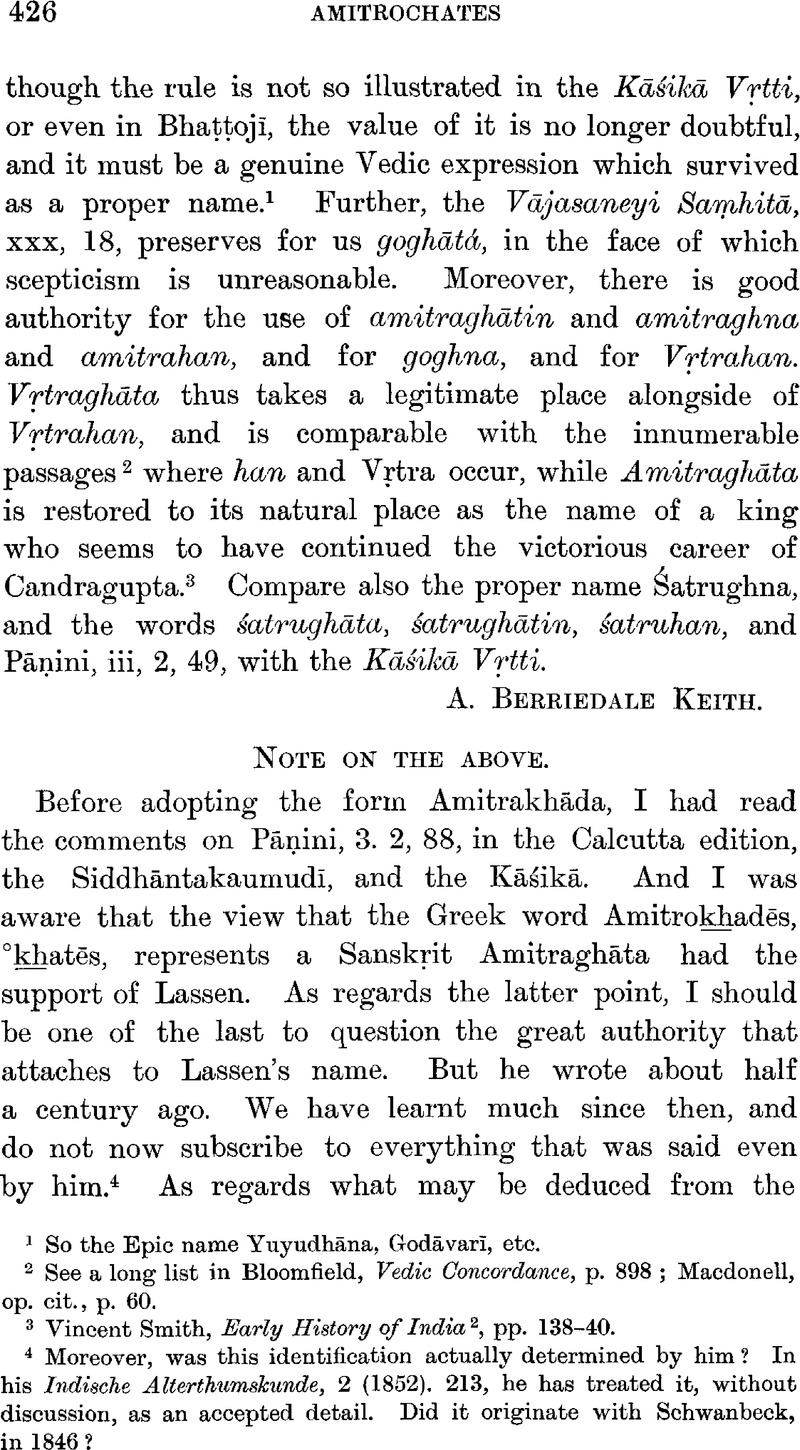No CrossRef data available.
Article contents
Abstract

- Type
- Miscellaneous Communications
- Information
- Copyright
- Copyright © The Royal Asiatic Society 1909
References
page 426 note 4 Moreover, was this identification actually determined by him? In his Indische Alterthtimskunde, 2 (1852). 213,Google Scholar he has treated it, without discussion, as an accepted detail. Did it originate with Schwanbeck, in 1846?
page 427 note 1 I may, however, observe that I did not take Amitrakhāda as being intended to suggest that Indra actually ate any of his foes! And I really do not see why the word khāda in this term should not have been applied in a metaphorical sense, as, Surely, must be the case in the expression to the Maruts, the storm-gods (cited by Mr. Keith): —“You chew up forests, or devour trees.”
Is there not also another possibility? Mr. Keith has drawn attention (p. 423 above, note 3) to the use, in the second half of RV, 10. 152, 1, of hanyatē, which he considers noteworthy,—apparently as indicating an original amitrayhāta, rather than khāda, in the first part of the verse. If hanyatē. was really used there with any special object, may not that object have been, equally well, to indicate the meaning to be given to °khāda? In this connection we note that, though the meaning is rejected by Vōpadēva and the Kātantra, the Dhātupāṭha gives a root khad to which it assigns, in addition to the meaning ‘eating’ which belongs to khād, the meaning ‘injury or hurting’ (hiṁsāyām): see Westergaard, , Radices, p. 345,Google Scholar No. 13. However, this detail is not material to my case.




